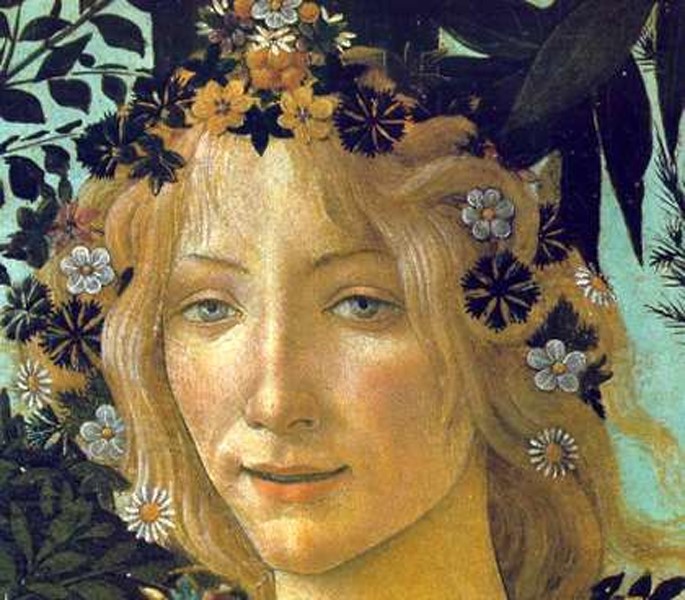Frederic J. Schwartz is Professor of Art and Architecture History at University College London. He has written extensively on the German movements from the late 19th and early 20th century, including the relations between theory and the avant-garde.
Frederic J. Schwartz is Professor of Art and Architecture History at University College London. He has written extensively on the German movements from the late 19th and early 20th century, including the relations between theory and the avant-garde. He is notably the author of The Werkbund: Design Theory and Mass Culture Before the First World War, and Blind Spots, Critical Theory and the History of Art in Twentieth Century, both published by Yale University Press, in which he deals with the connection between different forms of creation and the concept of 'fashion'. He is an editor of the Oxford Art Journal.
How would you connect fashion to elegance?
Elegance is something one has or that characterises him or her – someone is elegant. It’s a predicate. Fashion is something one does – façon, a fashion of doing something. It’s in every sense modal.
What is the role of history and art history in your conception of fashion?
They’re deeply intertwined. In fact, I’d turn it around and say that art history has to be thought through fashion. Think about it: the greatest work of modern art history – Alois Riegl’s Late Roman Art Industry – came out in 1901. It’s part of the same problematic that produced the Philosophy of Money in 1900, where Georg Simmel put the first of his extraordinary thoughts on fashion in the context of determining the nature of a capitalist economy. This constellation also produced the first important theory of consumption: Veblen’s Theory of the Leisure Class from 1899. They all deal centrally with the look of everyday objects, and how that changes and relates to subjectivity. The history of art could only find its footing as an academic discipline at the time of a highly developed market for consumer goods, when the objects of everyday life were the principal carriers of signs people manipulated in figuring out and communicating who they were, when the consumer market was becoming the primary field where culture happened.
Would you describe fashion as a language and a discourse, as Barthes did?
Absolutely. The way we manipulate the forms we use and wear creates meaning within codes that are implicated with various institutions and kinds of authority. We try out forms and modes and find out how they work and what opportunities they offer us. But maybe new notions of subjectivity and performativity help us understand that better than Barthes, or for that matter Baudrillard (who shouldn’t be underestimated).
The word intellectual was coined in a time of great political distress. Does fashion have a political role? And in which way?
How could fashion not be political? The only problem is that it hasn’t been explored as much as it should be. And that there are good politics and bad politics. And politics so unreflexive that they’re hard to recognise as such.
How would you relate the concept of 'fashion' to the one of 'style'?
They’re two sides of the same coin. For art historians, a coherent style was what unified a culture, its visual common denominator that was supposed to show the spiritual essence of a people, the visual language they speak without knowing it, a natural and unalienated form of expression. And this could only be imagined when people were worried that visual form was out of control, changing every season in the market to establish demarcations of class and prestige, and to encourage the needless replacement of objects. In other words, ‘style’ was discovered when ‘fashion’ became a problem. Wölfflin says so straight out in Classic Art (from 1899!). And this is what philosophers were referring to when they spoke of ‘fashion’ around 1900. (We should listen to them: they were thinking at a time when capital wasn’t so dense a system as to look like a fact of nature, when they could think in its gaps and corners, when it was clear that thinking under capitalism was something new and different.) Anyway, ‘style’ is a theory of the relation of visual form to subjectivity under pre-capitalist conditions of culture; ‘fashion’ is the basis of any theory of mass culture. (Unfortunately the ‘style’ part is nonsense, or utopian: Adorno points out that the unity of style is only a reflection of some form of domination. Fashion too, at that stage of modernity, was form subject to capital. After all, it’s the same coin.)
What does fashion have to do with intellectuality?
Fashion is, I guess, one mode of intellectuality.
What is the position of fashion between art and design?
That all depends on how much weight you want to put on notions such as ‘fashion,’ ‘art’ and ‘design’. I wouldn’t want to hypostatise. They’re all part of the same field of the visual. At various times it might serve strategic purposes to put a form of production (of objects, of wealth, of signs, of concepts) under one rubric or another. It depends on what your aim is. If you don’t know, watch out…
How would you interpret the different meanings of the word fashion, as a manner and, now, a system?
I think my whole analysis of fashion is based on the complexity of its
meanings.
Organised around a regular pattern: in this column each interviewee picks the picture that illustrates their interview, answers six questions that are the same for all contributors and then two more that are designed specifically for them. In two weeks Donatien will be interviewing the fashion designer Adam Kimmel.
